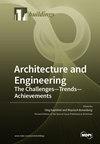关于含有来自疏浚沉积物和稻壳的共烧结轻质骨料的透水混凝土性能的研究
IF 3.1
3区 工程技术
Q2 CONSTRUCTION & BUILDING TECHNOLOGY
引用次数: 0
摘要
利用疏浚沉积物(DS)作为建筑应用中的转型材料,是一种理想的消耗策略。本研究试图通过将疏浚泥沙和稻壳(RHs)共同烧结,制造出一种新型陶瓷石轻质骨料(LWA),并将这种轻质骨料进一步融入透水混凝土的建造中。研究结果表明,基于 DS 的 LWA 的最佳生产程序包括 21% 的 RH 添加量、1100 °C 的烧结温度和 21 分钟的烧结持续时间。值得注意的是,最佳陶瓷石 LWA(称为 SDC-H)的圆柱体抗压强度为 28.02 兆帕,对 Pb2+ 的吸附效率为 94.33%。综合分析(包括体积密度、圆柱体抗压强度、吸水率和重金属浸出浓度)证实,SDC-H 达到了从固体废弃物中提取的高强度轻集料的规范阈值(T/CSTM 00548-2022)。取代 50%的 SDC-H 后,创新透水混凝土的机械性能有所下降,但动态吸附能力有所提高,机械强度达到 26.25 兆帕,对 Pb2+ 的累积吸附能力为 285 毫克/克。含有 50% SDC-H 的透水混凝土的这些性能可能与相互连接的开放孔隙结构的演变有关。本文章由计算机程序翻译,如有差异,请以英文原文为准。
Investigation on Properties of Pervious Concrete Containing Co-Sintering Lightweight Aggregate from Dredged Sediment and Rice Husks
The utilization of dredged sediment (DS) as a transformative material in building applications presents an ideal consumption strategy. This study endeavors to create a novel ceramsite lightweight aggregate (LWA) through the co-sintering of DS and rice husks (RHs), further integrating this LWA into the construction of pervious concrete. Results revealed that the optimum production procedure for the DS-based LWA incorporated a 21% RH addition, a sintering temperature of 1100 °C, and a sintering duration of 21 min. Notably, the optimal ceramsite LWA, denoted as SDC-H, exhibited a cylinder compressive strength of 28.02 MPa and an adsorption efficiency for Pb2+ of 94.33%. Comprehensive analysis (encompassing bulk density, cylinder compressive strength, water absorption, and the leaching concentrations of heavy metals) confirmed that SDC-H impacted the specification threshold of high-strength light aggregate derived from solid waste (T/CSTM 00548-2022). Substituting 50% of SDC-H led to a diminution in the mechanical properties but an improvement in the dynamic adsorption capacity of the innovative pervious concrete, registering a mechanical strength of 26.25 MPa and a cumulative adsorption capacity for Pb2+ of 285 mg/g. These performances of pervious concrete containing 50% SDC-H might correlate with the evolution of an interconnected and open-pore structure.
求助全文
通过发布文献求助,成功后即可免费获取论文全文。
去求助
来源期刊

Buildings
Multiple-
CiteScore
3.40
自引率
26.30%
发文量
1883
审稿时长
11 weeks
期刊介绍:
BUILDINGS content is primarily staff-written and submitted information is evaluated by the editors for its value to the audience. Such information may be used in articles with appropriate attribution to the source. The editorial staff considers information on the following topics: -Issues directed at building owners and facility managers in North America -Issues relevant to existing buildings, including retrofits, maintenance and modernization -Solution-based content, such as tips and tricks -New construction but only with an eye to issues involving maintenance and operation We generally do not review the following topics because these are not relevant to our readers: -Information on the residential market with the exception of multifamily buildings -International news unrelated to the North American market -Real estate market updates or construction updates
 求助内容:
求助内容: 应助结果提醒方式:
应助结果提醒方式:


